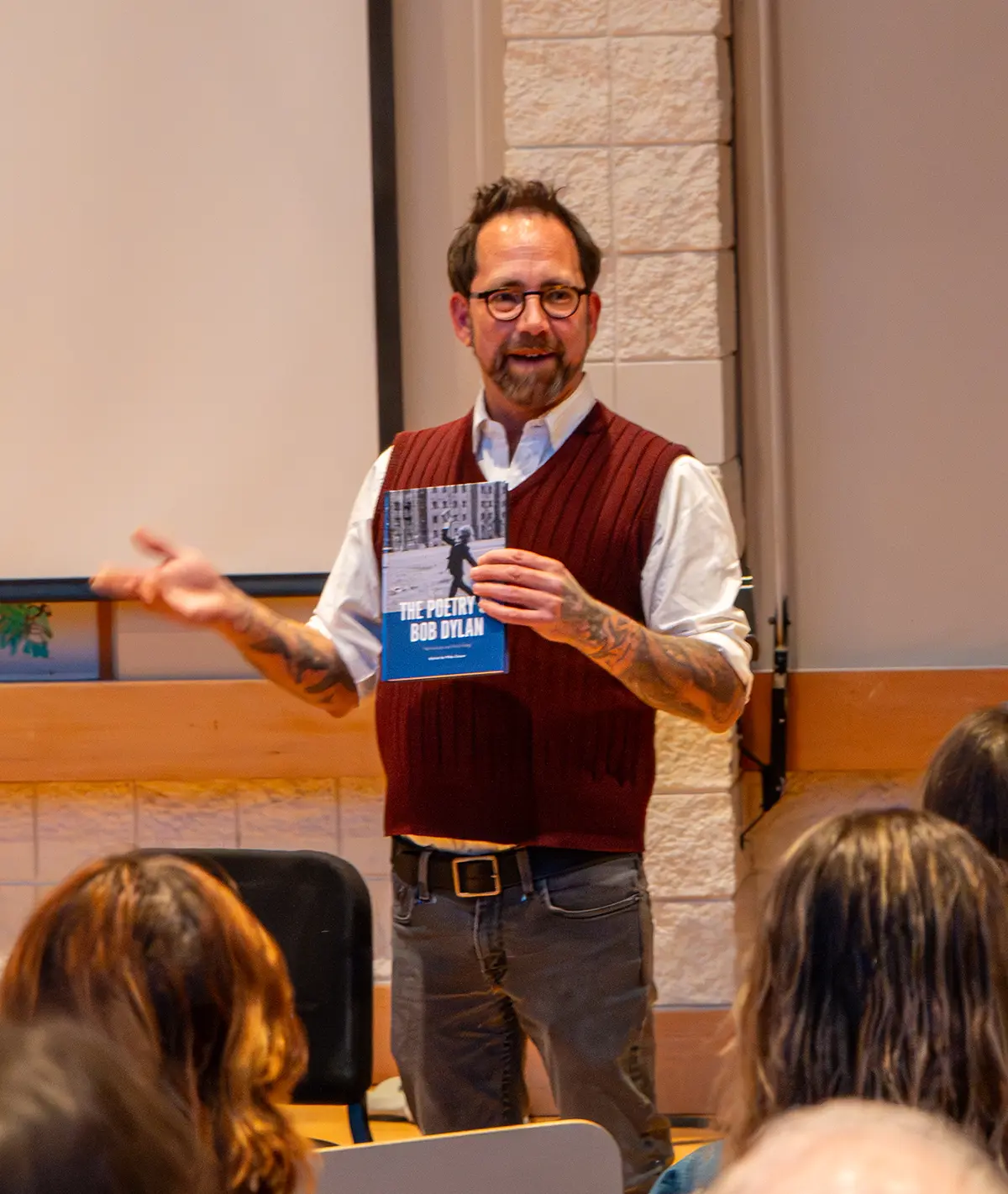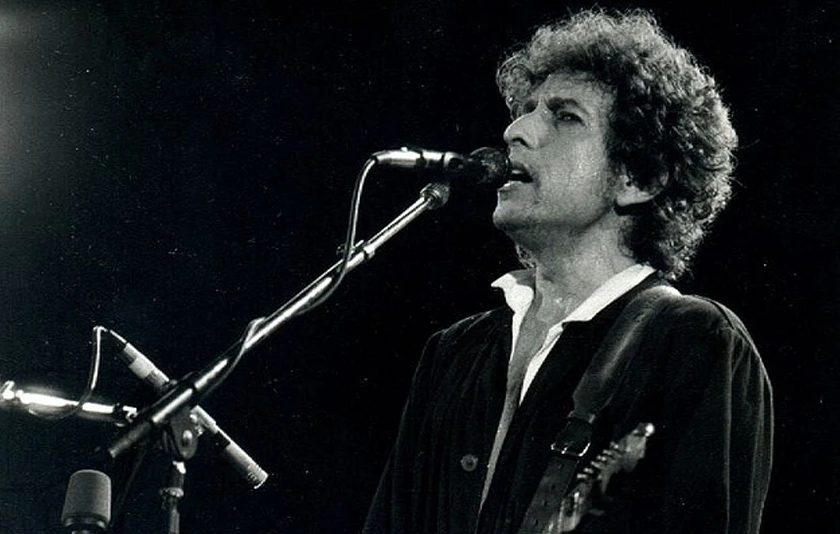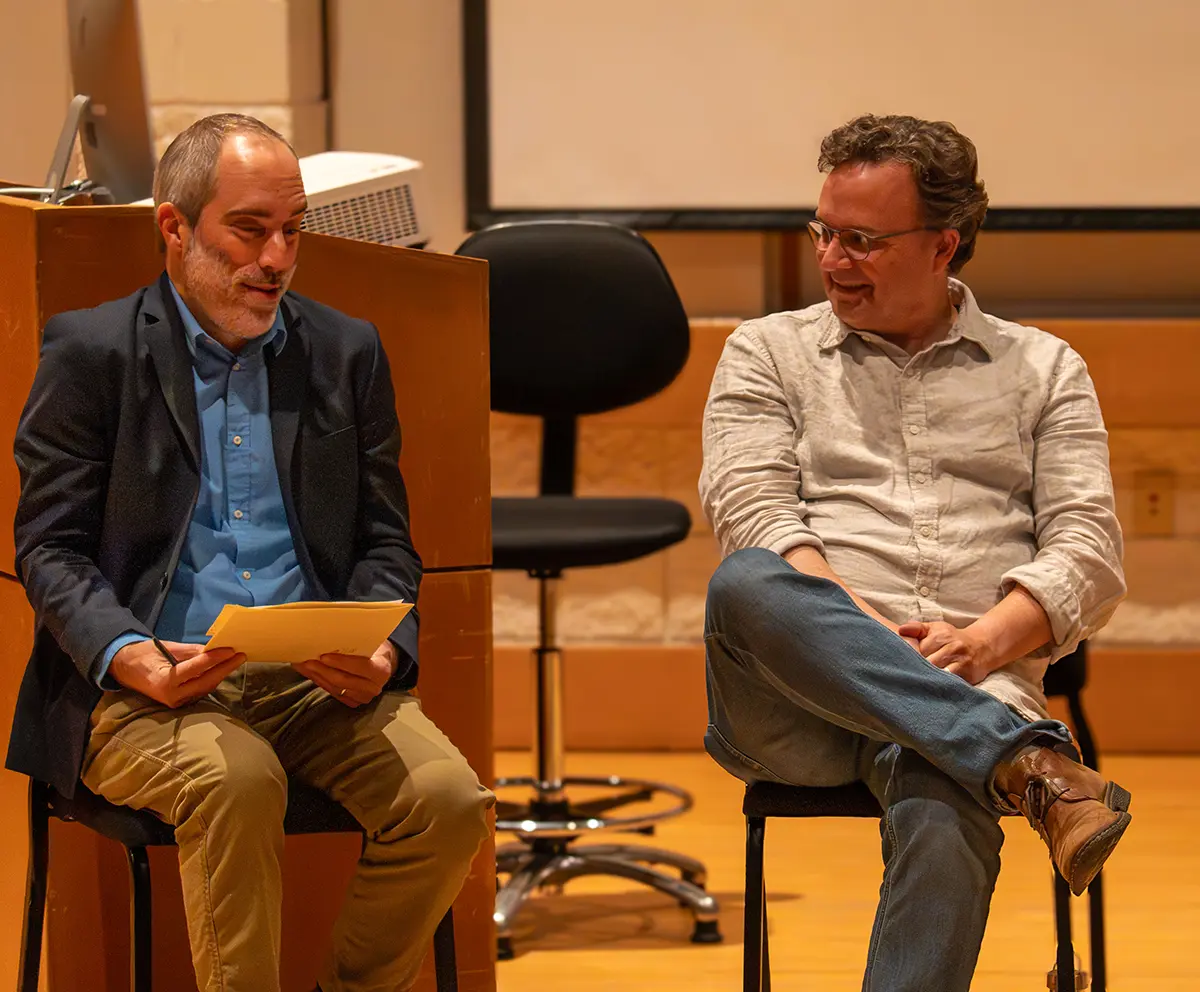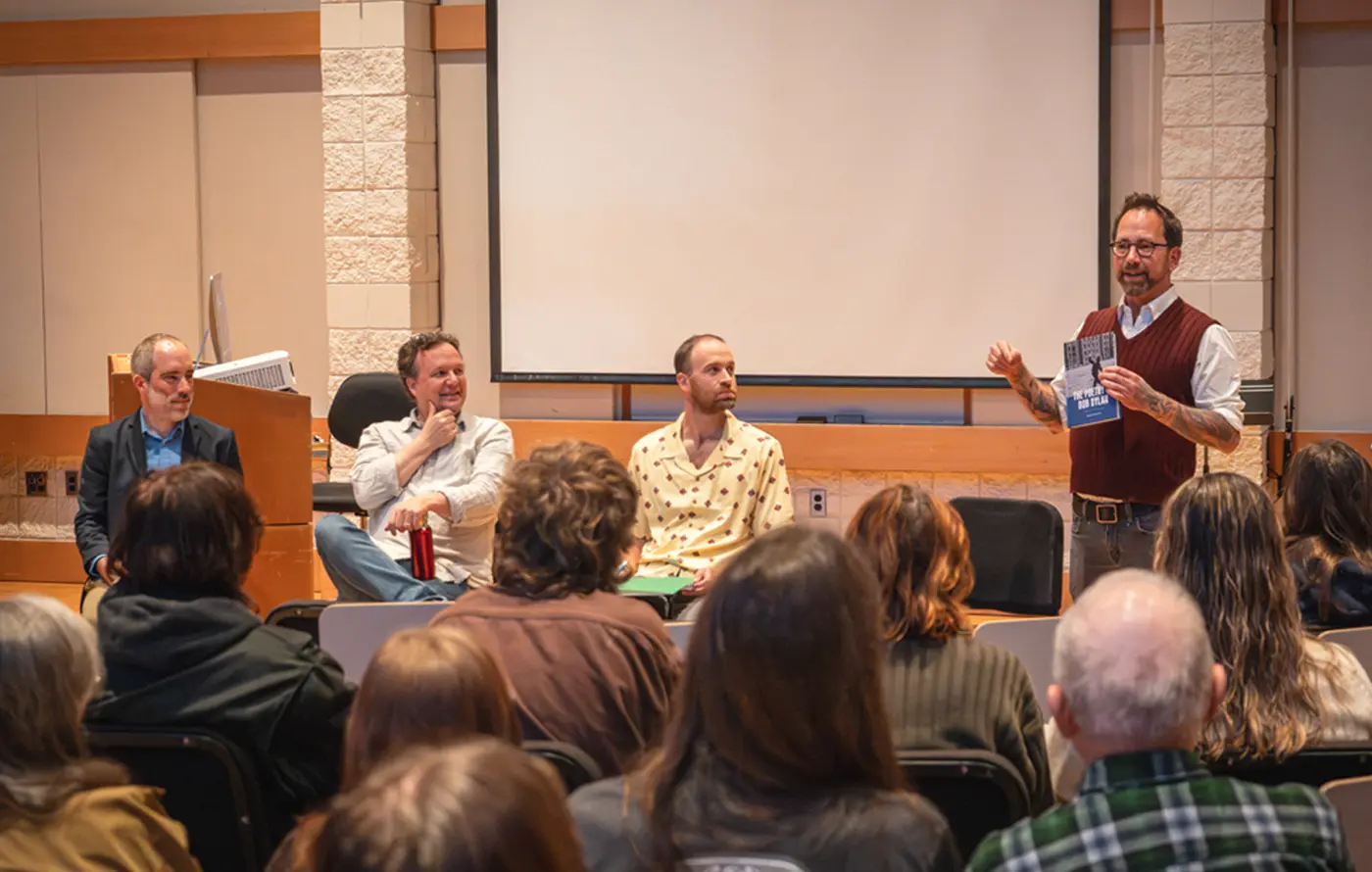"What my students need is a book that goes song by song through Bob Dylan's catalog explaining how the words of each one work," psychology professor Erik Noftle mused to his Willamette University colleague Mike Chasar, professor of English.
It was the kind of offhand remark that gets made a dozen times a day on a college campus. But Chasar, Willamette's resident expert on poetry in public life and popular culture, took it seriously.
“To my absolute astonishment and delight, Mike came back to me a few weeks later saying he was planning to edit a book that would essentially solve my problem,” Noftle says. “And the fantastic volume he has produced has done just that.”
Soon after the encounter with Noftle, Chasar was emailing and calling friends across the country — poetry scholars, English professors, Dylan experts, historians, musicologists, and experts in African American Studies, Gender Studies, and Cultural Studies. Would they contribute to a book exploring Dylan's songs as poetry?

The challenge was deceptively simple: pick one song by the Nobel Prize-winning artist and explain what you see and hear. All in 2,000 words or fewer.
By the end of the weekend, 20 scholars had signed on. By the time Chasar finished, he had 30.
The project had uncovered something unexpected: a hunger among scholars to dig into Dylan's music this way, to treat his lyrics not just as cultural artifacts but as poetry worth close, careful reading.
The result is The Poetry of Bob Dylan: Thirty Essays on Thirty Songs, a collection of essays edited and introduced by Chasar exploring the stories behind songs across Dylan’s prolific catalogue spanning six decades and numerous musical genres. Chasar was careful to make the essays accessible to a wide range of readers, from the Dylan-curious music fan to the scholar steeped in literary theory.
“Everyone had the same assignment. Every single approach to answering that is different,” Chasar says. “They vary their approach to the point where you're amazed at the ingenuity because they're so creative.”
Reading popular music as poetry
While Dylan has long been celebrated for his lyrical brilliance, not everyone is willing to consider his songs as literary masterpieces. Indeed, the announcement of Dylan’s Nobel Prize in Literature in 2016 was met with controversy. Is Bob Dylan really a poet?
Chasar thinks so. He says that reading Dylan’s songs as poems not only changes how we hear his songs, but also changes the way we think about poetry itself.
“When people hear the term ‘poetry,’ oftentimes they imagine a paged-based solitary reading encounter,” Chasar says. “Thinking about popular song lyrics as a form of poetic expression challenges all of our preconceptions of what poetry is — how it operates, who’s involved with it, and how we consume it.”
In fact, Chasar says, the love of popular musicians like Dylan shows just how much people engage with poetry in their everyday lives.

“We commute to work and listen to poetic expressions on the radio. We collect poetic expressions on albums or old cassette tapes. We make poetry playlists for people and hear background poetic expressions at the grocery store. When people sing karaoke, they are taking part in an activity where they take over a form of poetic expression and personalize it as part of their Friday night entertainment,” Chasar says.
Anne Margaret Daniel’s essay on Dylan’s 1975 classic “Tangled Up in Blue” shows the range of approaches used throughout the collection. Daniel begins with an analysis of a video of an early live performance of the song, with close attention to the lyrical changes Dylan has made to the song and their possible meanings. She then turns to Dylan’s archived notebooks to see how the song evolved through its early drafts as Dylan played with different word choices, changing points of view, and even titles.
As Daniel reads the shifting language of one of Dylan’s best-known songs, she makes the familiar unfamiliar: “Those songs you know by heart?” She writes. “[Dylan’s] been knowing them longer, and has plenty more to put into them.”
Willamette: a hub for interdisciplinary collaboration
At the book’s launch party in October 2025, Chasar and Noftle were joined by professor of Music James Miley, and one of the book’s essayists, Ryan Topper, an English professor at Western Oregon University.

The various expertise of the faculty were on full display at the event. Chasar performed close readings of the texts. Noftle, a personality psychologist as well as a longtime community radio DJ, mused on Dylan’s portrayal of his self-conception. Miley analyzed Dylan’s inversion of traditional blues chord progressions.
According to Noftle, such interdisciplinary collaborations are commonplace at Willamette.
“One big advantage of a small liberal arts college is that faculty are less likely to be isolated within a disciplinary silo,” Noftle says. “When questions extending outside our disciplines arise, we personally know experts we can turn to. I've worked with a professor in Japanese Studies to translate psychological measures, I've recruited a colleague in Physics to review a manuscript for a journal which applied physics frameworks to psychological models, and I've asked Mike Chasar, our resident poetry expert, several times over the years about different methods I could employ to inspire students to more deeply engage with Dylan's lyrics.”
Creative Writing major Arlo Craft BA’26 is taking Chasar’s seminar focused on Dylan. They’ve been surprised at how their feelings toward Dylan have changed in the course.
“The book is teaching me just how many ways there are to approach this kind of analysis,” Craft says.
Using the book’s essays as examples, Chasar’s students will write their own essays taking on one of Dylan’s songs.
“Each song has social and historical context, relevance in Dylan's career, and a lot of different poetic interpretations, so it's interesting to see which of those themes the authors choose to tackle and how,” Craft says.
Noftle can’t wait to use the book the next time he teaches his course on Dylan.
“It will be a perfect reader for my next College Colloquium to help students to engage with and understand Dylan's songcraft,” Noftle says.



